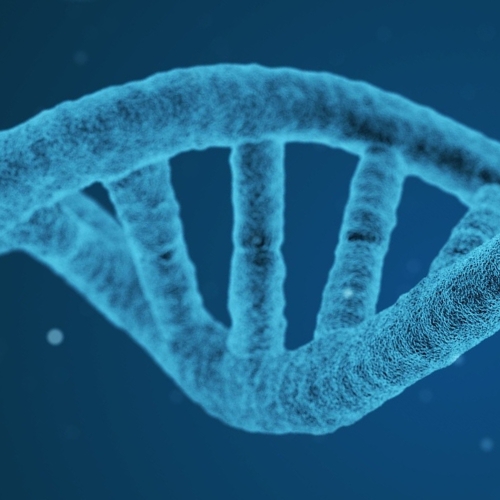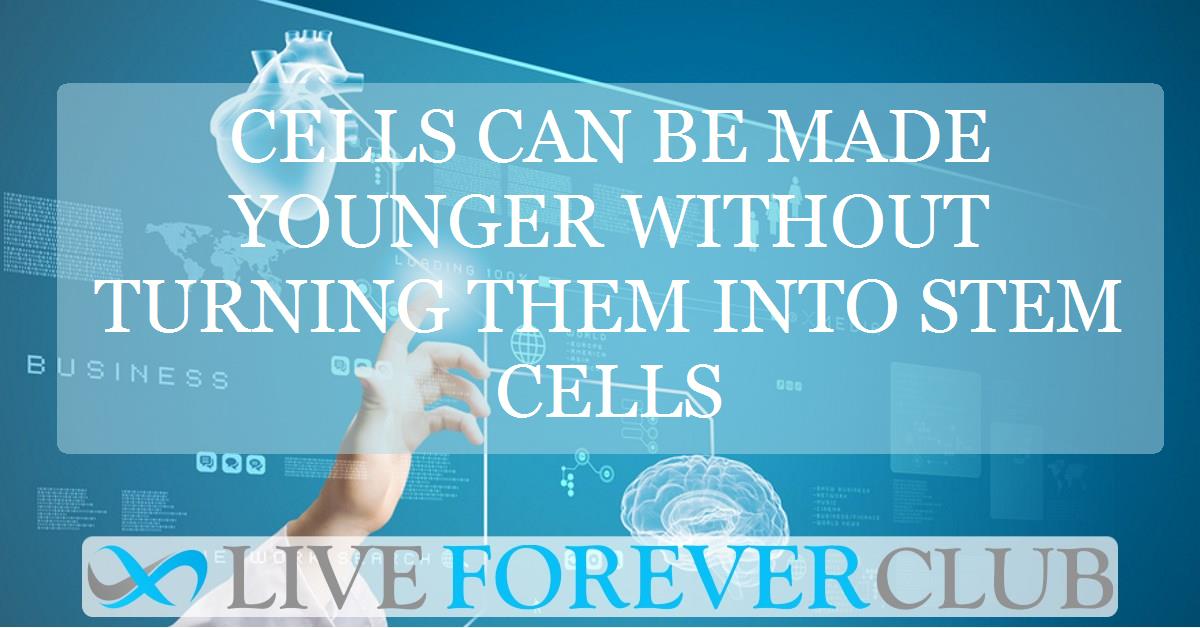Ageing is something we all experience, yet until recently, it remained an unstoppable force of biology. While treatments can improve health and longevity, the idea of actually reversing the biological signs of ageing once seemed like pure science fiction. But that’s changing.
A growing body of research is exploring a new frontier in regenerative medicine: partial cellular reprogramming. This concept involves temporarily altering the identity of a cell to make it act and behave more youthfully—without wiping its memory clean, as full reprogramming into stem cells does.
The implications are massive. Instead of replacing damaged tissues or organs, scientists may be able to "refresh" them. This opens a potential window into treating age-related diseases, improving tissue repair, and even extending healthy lifespan—all while avoiding the major risks of uncontrolled cell growth and cancer often associated with full reprogramming.
What Exactly Is Partial Reprogramming?
At its core, partial reprogramming involves a brief activation of specific genetic factors—most famously the Yamanaka factors (Oct4, Sox2, Klf4, and c-Myc)—to push a cell into a more flexible, regenerative state. The critical difference from full reprogramming lies in the duration and control. By limiting exposure, cells retain their identity while shedding some of their aged characteristics.
This technique has been tested in both mouse and human models. The evidence so far suggests that it can reduce molecular markers of ageing, such as damaged DNA, dysfunctional mitochondria, and inflammation, all without pushing the cell into a stem-like state. Researchers have even observed improvements in organ function, including brain, skin, muscle, and liver tissues.
Shifting the Cell’s Identity Just Enough
When partial reprogramming is applied, a series of changes unfolds within the cell. These changes are primarily epigenetic—meaning they influence how genes are expressed rather than altering the underlying DNA sequence.
For example, the tight packaging of DNA in the cell (known as chromatin) becomes more open and flexible. Histone modifications—chemical tags that control gene access—are restructured, allowing genes associated with development and regeneration to become more active. At the same time, the genes that maintain a cell’s “aged” identity begin to quiet down.
In reprogrammed heart cells, researchers have seen signs of early embryonic gene expression returning. In the liver, skin, and muscle, similar transitions to a more youthful gene activity profile have been observed. These subtle shifts suggest that cells are regaining youthful energy and function, all without losing their specialized roles.
Timing Is Everything: The Importance of Reprogramming Phases
The reprogramming journey doesn’t happen all at once. Researchers typically divide the process into three broad phases: initiation, maturation, and stabilization. Most studies suggest that the greatest rejuvenation benefits—and the fewest risks—occur when reprogramming stops midway, especially during the initiation or early maturation stages.
If the process continues too far, cells may lose their identity altogether, increasing the risk of dysfunction or malignancy. For example, excessive reprogramming in heart cells has led to their death. In liver tissues, overexposure caused severe organ damage.
By keeping the duration short and allowing recovery time after reprogramming, researchers aim to strike a delicate balance: revitalizing cells without turning them into something else entirely. This approach also helps prevent uncontrolled proliferation—a key concern when working with genes like MYC, which are known to be linked with cancer.
The Role of the Tissue Environment
One of the more surprising findings is that reprogramming one group of cells can affect the behavior of neighboring cells. For instance, in mouse muscle, partial reprogramming not only improved the function of treated cells but also encouraged nearby stem cells to become more active.
This suggests that the benefits of reprogramming might extend beyond the targeted cells. The surrounding extracellular matrix (ECM)—the structural mesh around cells—also shows significant remodeling. In some cases, it becomes more youthful and flexible. In others, the stiff, fibrotic signals associated with ageing are reduced.
However, the response of the ECM can vary. Some studies report an increase in regenerative collagen production, while others see a decrease in genes linked to scarring. These differences may depend on whether a recovery period follows reprogramming or the specific tissue involved.
What Does Rejuvenation Actually Mean?
A central question in this field is: How do we know a cell has become younger? One common method uses biological ageing clocks—calculations based on DNA methylation and gene expression patterns that correlate with biological, rather than chronological, age.
Studies show that partial reprogramming can “rewind” these clocks in several tissues, including brain, kidney, skin, and liver. These changes have even been observed in cells from progeria patients, who suffer from accelerated ageing. Remarkably, many of these improvements persist even after reprogramming stops.
However, not all clocks agree. Some respond more to inflammation, while others reflect cell type or stress. This inconsistency raises doubts about whether all clocks truly capture ageing—or simply reflect specific cellular states. Still, when combined with other markers like improved mitochondrial activity and reduced inflammation, the case for rejuvenation becomes more compelling.
Stress, Inflammation, and Senescence: A Complex Picture
Ageing isn’t just about time—it’s also about stress. With age, cells accumulate damage, enter senescence (a state of permanent rest), and release pro-inflammatory signals that harm their environment.
Partial reprogramming appears to reduce many of these effects. In several studies, the expression of inflammatory genes dropped, autophagy (the cell’s internal cleanup system) improved, and markers of cellular senescence decreased. These improvements have been observed both during and after reprogramming, especially when a recovery period is included.
However, the story isn’t always simple. In some models, reprogramming temporarily increases inflammation or mimics early signs of senescence before reversing them later. The outcome often depends on the specific protocol, the type of cell being treated, and whether the experiment was performed in a living organism or a petri dish.
Energy and Metabolism: Recharging the Cell’s Engine
One of the consistent hallmarks of ageing is mitochondrial dysfunction. These organelles, often called the powerhouses of the cell, begin to lose efficiency over time. Partial reprogramming can reverse many of these changes.
Treated cells show higher mitochondrial membrane potential, improved oxygen consumption, and reduced oxidative stress. Energy-generating pathways like the tricarboxylic acid (TCA) cycle and oxidative phosphorylation are boosted, while markers of mitochondrial decay decrease. These enhancements restore not just energy output but also the resilience of the cell.
Interestingly, the method of reprogramming influences the metabolic shift. Chemically reprogrammed cells seem to rely on a different sequence of energy transitions compared to those exposed to genetic factors. This suggests that the rejuvenation process isn’t one-size-fits-all—and that different tissues or damage states may require different recipes.
Risks on the Road to Regeneration
Despite the excitement, the risks cannot be ignored. Pushing cells too far can lead to loss of function, uncontrolled growth, or cancer. Some reprogramming factors, especially MYC, are notorious for their links to tumor formation.
To navigate this, researchers are experimenting with safer combinations, such as OSK-only protocols that omit MYC, and with small molecules that mimic reprogramming without directly altering the genome. Even so, the possibility remains that a partially reprogrammed cell could give rise to malignancy—especially if hidden mutations are already present.
For these reasons, caution is essential when considering partial reprogramming as a treatment, particularly in otherwise healthy individuals. Still, in controlled settings, such as ex vivo therapy or localized treatment of specific tissues, the potential may outweigh the risks.
Moving From Lab to Clinic: Where Do We Begin?
So far, most experiments have been done in animal models or isolated human cells. Moving to clinical trials will require extreme care. But there’s one organ where scientists are making progress: the eye.
As a self-contained organ with limited exposure to the rest of the body, the eye presents an ideal testing ground. Already, researchers have shown improvements in vision in aged mice using partial reprogramming. Some treatments are being prepared for human trials, particularly for conditions like glaucoma and age-related macular degeneration.
Meanwhile, another promising route is reprogramming cells outside the body, then returning them once safety has been verified. This strategy mirrors recent advances in gene editing, where patient cells are edited ex vivo and then reintroduced.
Looking Forward: What’s Next for Reprogramming and Ageing?
Partial cellular reprogramming is still in its early stages, but the potential is vast. By nudging cells back toward a youthful state—without erasing their identity—scientists are beginning to explore therapies that could improve recovery after injury, reduce age-related disease, and possibly add healthy years to human life.
Still, many questions remain. What defines a youthful cell? How can we measure rejuvenation reliably across tissues? And most importantly, how do we ensure that these treatments remain safe over the long term?
Continued research will need to tackle these challenges with rigor. But the momentum is real. What was once a fantasy—reversing age-related decline from within—may soon become part of the new reality of medicine.
The study is published in the journal Ageing Research Reviews. It was led by Georg Fuellen from Rostock University Medical Center.








